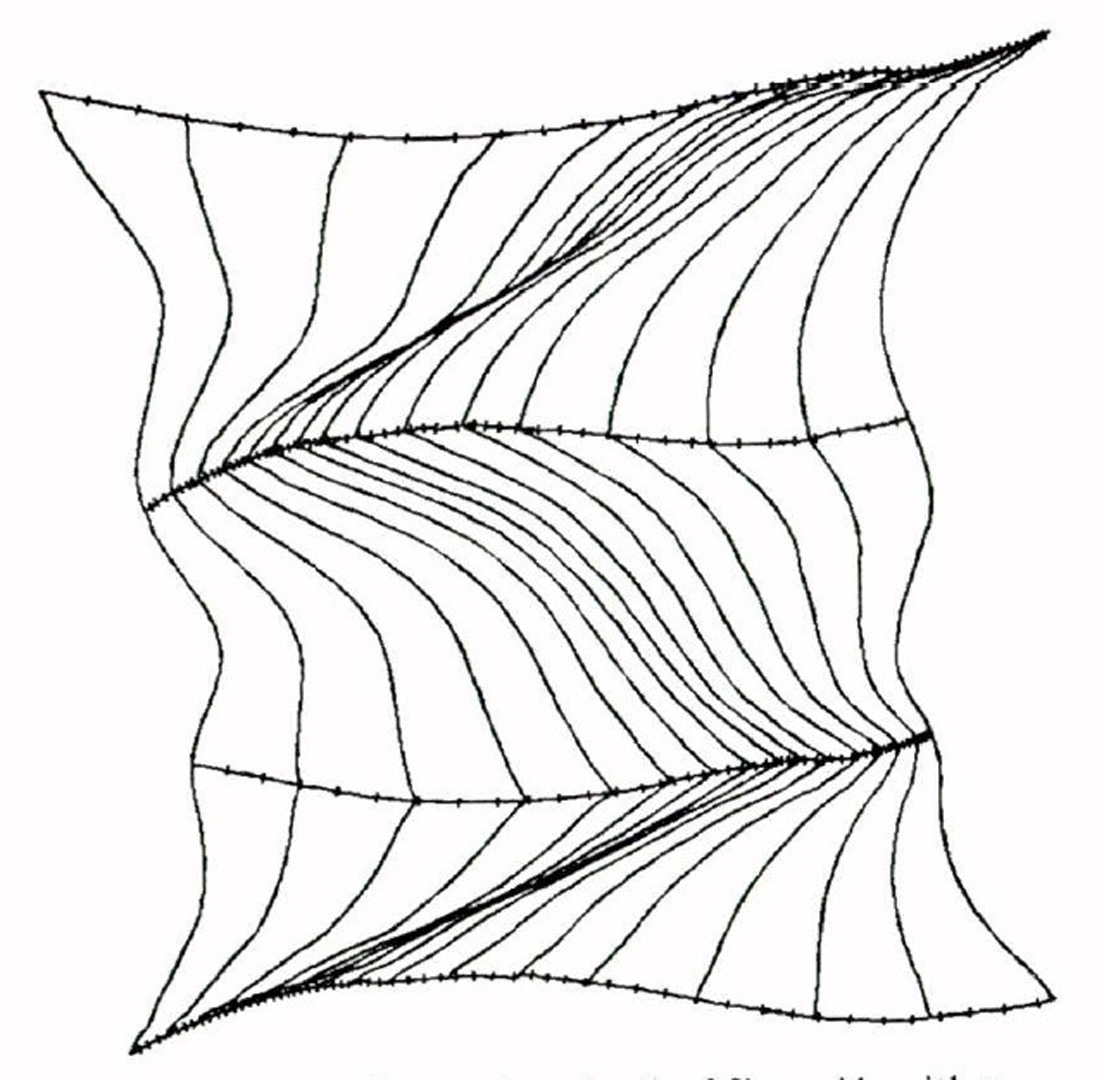“Inbetweening for computer animation utilizing moving point constraints” by Baecker, Miller and Reeves
Conference:
Type(s):
Title:
- Inbetweening for computer animation utilizing moving point constraints
Presenter(s)/Author(s):
Abstract:
This paper presents an approach to computerized inbetweening which allows the animator more control over an interpolation sequence than existing keyframe techniques. In our approach, the animator specifies in addition to a set of keyframe constraints, a set of new constraints called moving points. Moving points are curves in space and time which constrain both the trajectory and dynamics of certain points on the keyframes. The sets of keyframes and moving points form a constraint or patch network specification of the desired dynamics. Several algorithms are presented for inbetweening or completing such a patch network. By measuring these algorithms with respect to a set of evaluation criteria, the algorithm which best meets our interpolation needs is selected.
References:
1. Baecker, R. M., “Picture-driven animation,” Spring Joint Computer Conference, (1969).
2. Burtnyk, N., and M. Wein, “Computer generated key frame animation,” Journal of the Society of Motion Picture and Television Engineers, Vol. 80, (March 1971): 149-153.
3. Burtnyk, N., and M. Wein, “Interactive skeleton techniques for enhancing motion dynamics in key frame animation,” CACM, Vol. 19, No. 10, (October 1976).
4. Catmull, E., “The problems of computer-assisted animation,” Proc. ACM Siggraph, Vol. 12, No. 3, (August 1978).
5. Catmull, E., “New frontiers in computer animation,” American Cinematrographer (Oct. 1979).
6. Coons, S. A., “Surface patches and B-spline curves,” in Computer Aided Geometric Design, Barnhill and Riesenfeld (eds.), Academic Press, (1974).
7. Csuri, C., “Realtime film animation,” Annual Report to NSF, Computer Graphics Group, Ohio State Univ., (1973).
8. Kahn, K,, “A computational theory of animation,” Massachusetts Institute of Technology, AI Working Paper #145, (April 1977).
9. Levoy, Marc, “A colour animation system based on the multiplane technique,” Proc. ACM Siggraph, (1977).
10. Mezei, L., and A. Zivian, “ARTA, an interactive animation system,” Proc. IFIP 1971, (1971): 429-434.
11. Miura, T., J. Iwata, and J. Tsuda, “An application of hybrid curve generation—cartoon animation by electronic computers,” Spring Joint Computer Conference, (1967).
12. Reeves, W. T., “Quantitative representations of complex dynamic shape for motion analysis,” Ph.D. Thesis, Dept. of Computer Science, Univ. of Toronto, (Sept. 1980).
13. Reeves, W. T., and P. Sermer, “Representation of hand-drawn curves,” submitted to Journal of the ACM, (May 1981).
14. Stern, Garland, “GAS—A system for computer aided keyframe animation,” Ph.D. Thesis, Univ. of Utah, (1978).
15. Tuori, M. I., “Tools and techniques for computer-aided animation,” M.Sc. Thesis, Department of Computer Science, University of Toronto, (1977).




